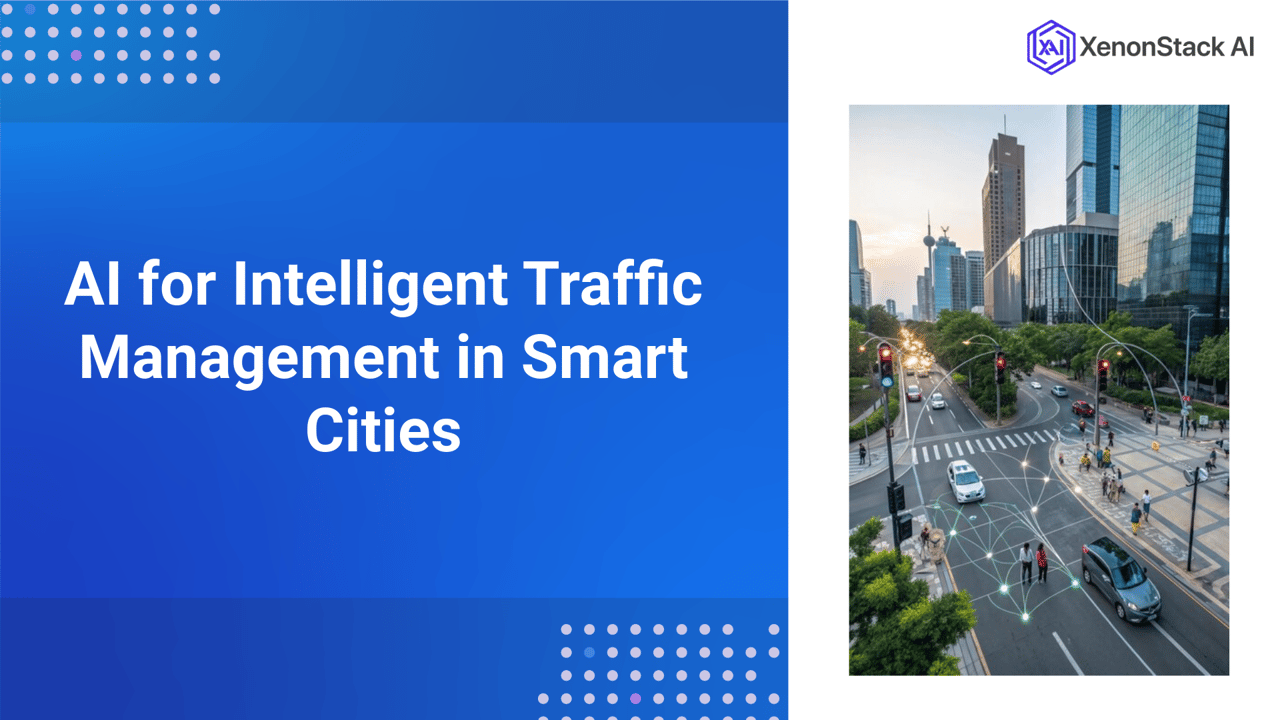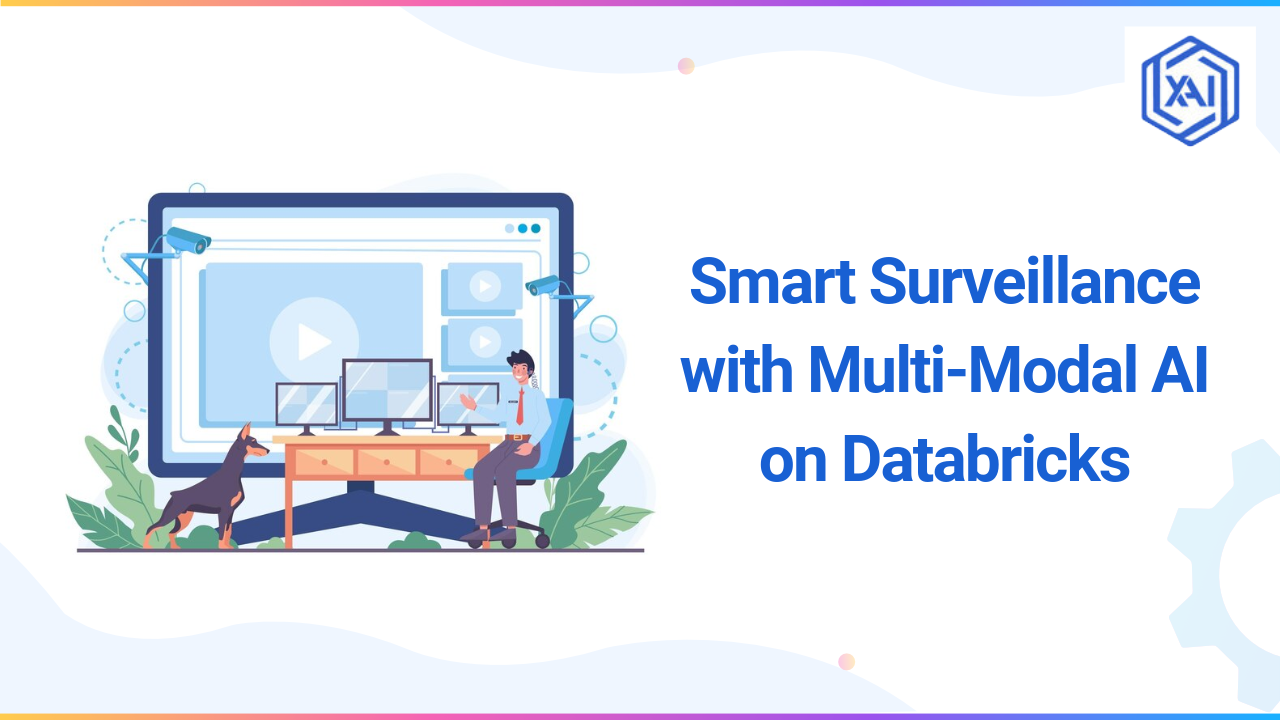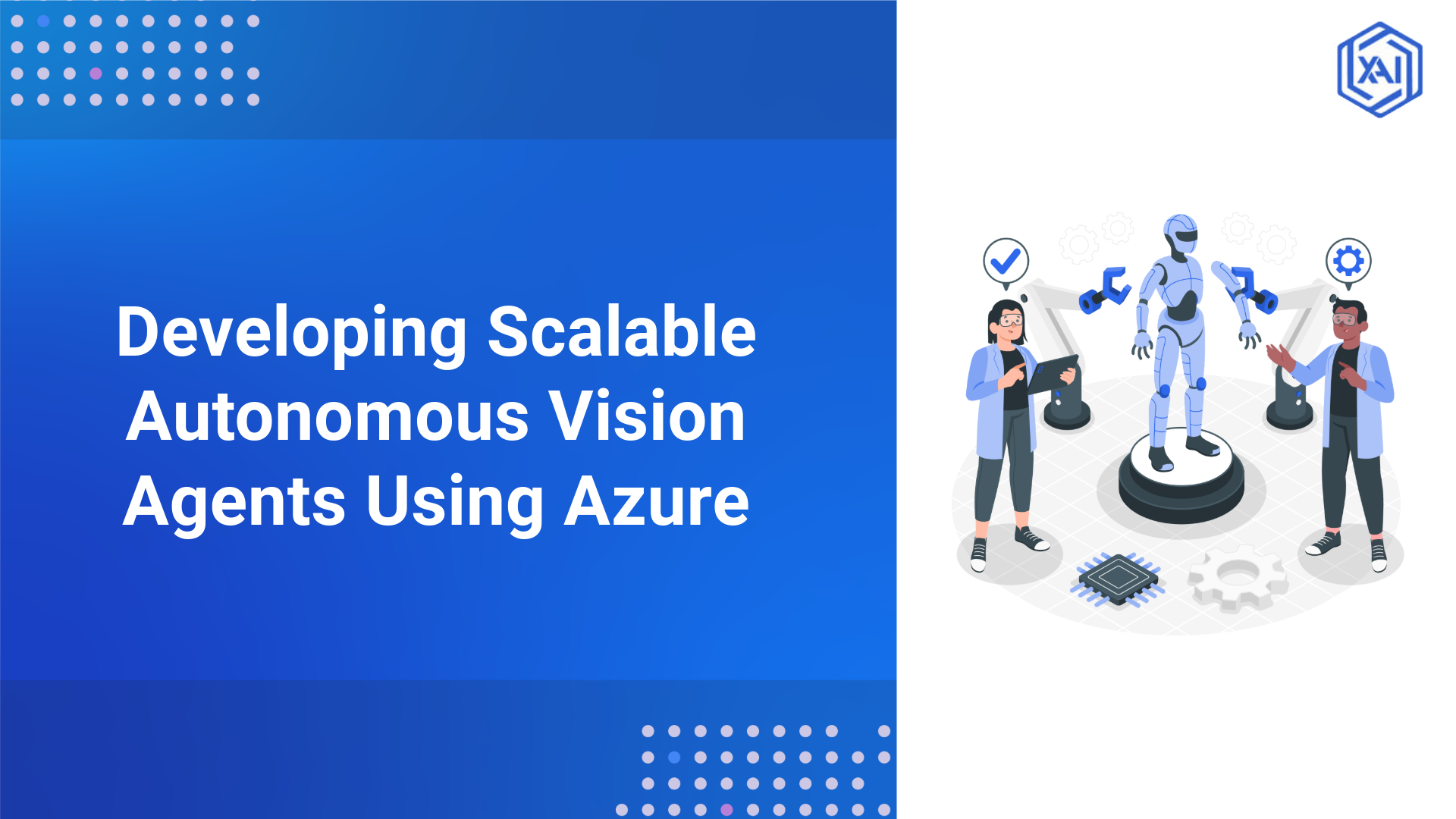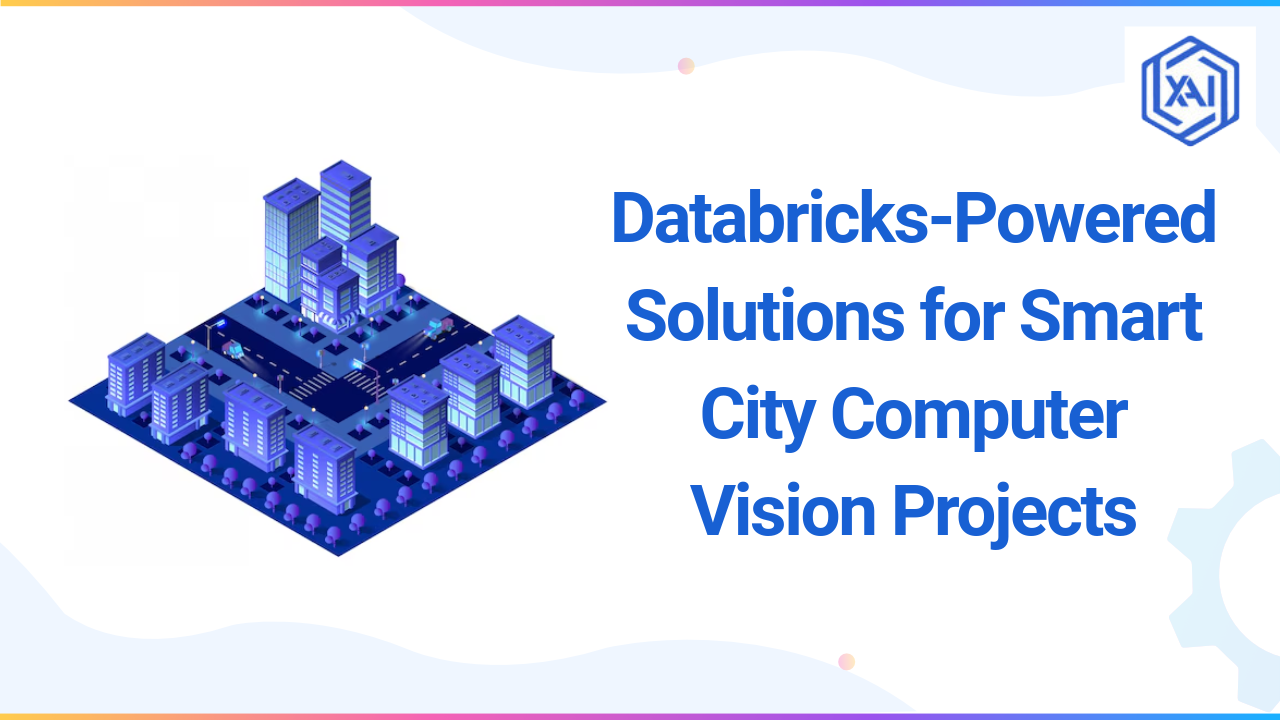
Today, the population gravitates more towards urban centres than earlier, and this pressure is raising many challenges. Among the more pressing problems in the world’s cities, traffic congestion is arguably one of the most crucial. Heightened city expansion demands an improved traffic flow mechanism, enabling the increasing population to do more while causing the least harm to the overwhelmed environment. Artificial Intelligence (AI) is gradually seen as the key to solving these challenges, improving city traffic, increasing public transportation efficiency, and making cities more innovative and sustainable.
The Problem: Challenges in Urban Traffic Management
Traffic congestion is becoming an increasing problem in most large cities around the globe. The key issues that cities face include:
-
Traffic builds up due to the increasing population in the urban areas.
-
There is a lack of adequately organized public transport, which cannot accommodate growing population demands.
-
Pollution and emission of greenhouse gases have resulted in environmental degradation.
-
It includes the lack of real-time data for managing traffic, which leads to the creation of ineffective traffic plans and poor response.
The Solution: Using Artificial Intelligence to Manage Urban Traffic
Due to its real-time guidance and analysis capabilities, AI has been crucial in tackling traffic congestion in urban areas, enhancing Public Transport Systems, and decreasing the impact of transport on cities' physical environments.
-
Application of AI in the Prediction & Control of Traffic
Systems incorporating AI can use historical and real-time traffic information in the subject area to accurately predict the typical courses that traffic will follow and recommend flow patterns. For instance, Los Angeles has assigned an artificial intelligence system that looks at data from cameras and sensors to forecast traffic density and adjust signal timings. This system has done well in cutting the journey time by 12%.Likewise, Singapore’s Land Transport Authority (LTA) has implemented machine learning to forecast traffic and change routes. Automated collected information through GPS-installed cars, traffic cameras, and social media accounts to provide real-time traffic information and recommend less congested roads.
-
Smart Traffic Lights
A remarkable application of adaptive traffic control systems is smart traffic lights. Bright traffic lights can learn from ordinary traffic that differs from the standard timetable for traffic light controls. These bright lights relate to the ability to analyse data from sensors, traffic cameras, and GPS devices to regulate traffic.
In Pittsburgh, artificial intelligence controls traffic lights by installing the Surtrac system. This system has led to a reduction of one-quarter in travel duration and an equivalent decrease of one-third in the period taken by automobiles at intersections, data that exemplifies the ability of AI to minimize congestion and amplify the flow of traffic. An example is in ‘Smart Traffic Control’ in San Diego, which uses collected big data from connected smart cars to adjust their traffic signal timings.
-
AI in Public Transportation
The other application area of AI is enhancing the efficiency of public means of transport by providing the best routes, timetables, and carrying capacities. Currently, Transport for London (TfL), for instance, employs AI to determine how many passengers are expected and, as a consequence, modify the bus or train timetable. It has also improved on-time performance by 10% and reduced passengers waiting time by 15% in good weather, making this system very good.
Also, the Massachusetts Bay Transportation Authority (MBTA) incorporated Artificial Intelligence in the analysis of bus routes and in scheduling to ensure that it enhanced the reliability of bus services even though its operational costs were significantly reduced.
AI-Powered Intelligent Traffic Management Workflow
 Figure 1: Workflow diagram of Intelligent traffic management
Figure 1: Workflow diagram of Intelligent traffic management Explanation:
-
Urban Sensors & Cameras: Many traffic sensors and cameras are installed in the city to collect current traffic information, including flow rate or density, speed, and types of vehicles.
-
Data Collection System: It receives all data from the sensors players and cameras for further analysis.
-
AI Traffic Prediction Engine: This AI engine then processes the stored and received data and applies inherent and actual machine learning techniques to forecast traffic conditions for the future. It predicts traffic density and adjusts the switches of traffic lights.
-
Traffic Flow Optimization: It alters the traffic lights and lanes to provide better traffic flow under the estimated pattern. This eliminates traffic jam challenges and reduces the time wasted in traffic.
-
Bright Traffic Lights: Smart Traffic Lights are self-organising traffic systems that adapt to traffic densities. They prefer some lances, adjust the time the light stays on, and organize the traffic, ensuring little staking at interconnection points.
-
Traffic Congestion Alerts: In severe congestion situations, the AI engine estimates or recognizes the problem and signals other systems and drivers about the current traffic status.
-
Dynamic Route Suggestions: It produces live routing information for drivers and car users to assist them in avoiding fully crowded areas.
-
Vehicle Tracking: GPS devices installed in cars—private and public—are some of the sources that feed real-time data into the system to enhance precision and efficiency.
-
Public Transportation Management: Based on the tracking data collected from the vehicle, AI enhances the time management of public transportation systems such as buses, trains, or other public services in line with real demand.
-
AI-Optimized Bus & Train Schedules: The AI system changes the bus and train timetable depending on the traffic situation and passenger’ flows to increase service punctuality and decrease passenger waiting time.
-
User Traffic App: A mobile app for commuters that delivers public transport schedules, real-time traffic information, and other route recommendations.
-
Real-time Traffic Updates: It provides updates concerning the traffic patterns in the areas every time, which helps the users make the right decisions on the routes to take.
-
Alternative Route Suggestions: If there is traffic congestion, the app provides other routes so that the user can avoid spending unnecessary time wandering around a traffic jam.
-
Reduction in Idle Time & Fuel Consumption: These optimizations, which result from the application of AI-powered systems, include lower fuel consumption and less time spent in traffic.
-
Environmental Impact (Pollution Reduction): Reducing wasteful travel time and reduced traffic density in a route decreases the use of carbon products, improving the urban environment.
The Impact of AI on Urban Living
The integration of AI into urban traffic management has wide-ranging benefits:
-
Enhancing Traffic Efficiency
AI is already used in the traffic system for congestion estimation, traffic signal control, and real-time traffic information. Researchers have proven that if automated traffic systems are implemented, travel time can be reduced by between 10 and 20%.
-
Improving Public Transportation
AI helps make better decisions because it improves public transport organisation by organizing routes and timing to ensure efficient services. Through data collection from multiple sources, AI systems assist transit authorities in making functional schedule changes to enhance passenger satisfaction.
-
Reducing Environmental Impact
By employing Artificial Intelligence in traffic solutions, people use less fuel, minimizing greenhouse gas emissions. Eliminating traffic congestion and coordinating traffic efficiently reduce pollution, providing a sustainable environment for cities.
Applications: The Future of AI in Smart Cities
AI is also helping city planners design smart cities, meaning this technology is revolutionizing urban planning. By using AI, it is possible to gather information regarding population growth rates, traffic patterns, and infrastructural requirements to build smart cities. Barcelona has integrated Artificial Intelligence to map out strategies for undertaking urban development projects, using resources better and making its urban development more sustainable. Automating Administrative Processes in Schools with AI.
Ethical Considerations and Challenges
Given that AI is set to become more prevalent in our cities, several ethical questions must be answered, most apparent in data protection and algorithmic prejudices. AI systems and their performance must respect citizens' privacy; thus, the data acquired shall be secure and fit the data protection law. Also, AI algorithms present inherent biases in executing planning or traffic regulation for cities.
Real-World Impact: AI Adoption in Global Cities
Many cities of the world’s population are already pioneers in using artificial intelligence to enhance the quality of life in cities. Singapore, Pittsburgh, and Barcelona are some examples of cities where AI improved traffic management, improved public transport optimization and improved environmental conditions. A report by McKinsey has projected that traffic management through artificial intelligence can shave 20% of the time spent on roads in urban areas. In comparison, public end-to-end transport systems that employ AI can increase on-time arrivals by 10% and waiting time for passengers by 15%.
Conclusion for Traffic Management
Intelligent transportation systems, modern transit systems, smart growth, and sustainable infrastructure are all gaining capabilities through AI. These advances will only become apparent as AI technology advances, making cities more brilliant, sustainable, and habitable. In answering today’s urban questions and anticipating tomorrow’s solution, AI assists in the construction of the smart cities of the future.
Next Steps with Traffic Management in Smart Cities
Engage with our experts on how to implement compound AI systems, focusing on how industries and departments use Agentic workflow and Decision Intelligence to become decision-centric. Leverage AI to automate and optimize IT support and operations, enhancing efficiency and responsiveness. Additionally, it explores the role of AI in Intelligent Traffic Management in Smart Cities, utilizing AI to streamline and optimize urban traffic flow for improved transportation efficiency and safety.


